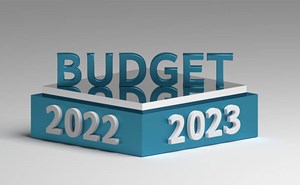On August 3, President Trump issued an executive order (EO) related to rural health and telehealth. As a reminder, EOs don’t actually effectuate policies, but rather, they direct federal agencies to implement policies usually through regulations. In the EO, the President calls on the Department of Health and Human Services (HHS) to develop new payment models aimed at transforming how clinicians practicing in rural areas are reimbursed under Medicare. Further, the President states in the EO that he believes that many of the telehealth flexibilities available during the COVID-19 public health emergency (PHE) should be made permanent and asks HHS to issue a reg that would examine which services should continue to be provided to patients via telehealth after the PHE ends.
It didn’t take long for HHS to act on the directives in the EO. On the same day the EO was issued, the Centers for Medicare & Medicaid Services (CMS) within HHS released the calendar year (CY) 2021 Physician Fee Schedule (PFS) and Quality Payment Program (QPP) proposed reg, which includes a robust set of proposed telehealth policies. While I provided a brief summary of this reg in last week’s Regs & Eggs (a more comprehensive summary is available here), I want to dig into the telehealth proposals and what they could mean for you as emergency physicians.
It is important to start with some context. As highlighted in a previous Regs & Eggs post, CMS took numerous steps to expand the use of telehealth under Medicare. Specifically, CMS temporarily added many codes, including all five emergency department (ED) evaluation and management (E/M) codes (the codes that emergency physicians most commonly bill) to the list of approved telehealth services. That means that these codes are reimbursable under Medicare when delivered remotely via telehealth at the same rate as they are when the services are delivered in-person.
Further, CMS used its unique “1135” waiver authority that only exists during a national emergency to temporarily waive two existing telehealth restrictions in Medicare: the originating site requirement, which mandates that Medicare beneficiaries receive a telehealth service from a certain type of health care facility and not from any location like their home; and the geographic requirement which restricts telehealth in Medicare to only rural areas. Waiving these requirements during the PHE allows clinicians to perform telehealth services regardless of where they or their patient are located, in both urban and rural areas.
Over the last several months, administration officials, including CMS Administrator Seema Verma, have been vocal in their support of making some of the telehealth flexibilities available during the PHE permanent. However, CMS does not have the legal authority to permanently waive the originating site and geographic restrictions. Eliminating these telehealth restrictions requires legislation from Congress, and ACEP has called on Congress to take action immediately. On the regulatory side, what CMS can do is decide which of the codes that it temporarily added to the list of approved Medicare services should become permanent additions to the list.
In the PFS proposed reg, CMS examines the numerous codes that it temporarily added to the list of approved telehealth services during the COVID-19 PHE, and separates them into three buckets:
- Codes that CMS is proposing to permanently include on the list of approved telehealth services.
- Codes that CMS is proposing to include on the list of approved telehealth services for the remainder of the calendar year in which the PHE ends (e.g. if the PHE ends in January 2021, the codes would remain on the list until December 31, 2021).
- Codes that CMS is proposing to remove from the list of approved telehealth services once the PHE ends.
CMS is proposing to only include in bucket 1 those codes that are similar to office-based codes which are already permanently on the list of approved telehealth services. However, CMS is proposing to include the ED E/M codes levels 1-3 in bucket 2. CMS states in the reg that it believes these codes have the potential to add clinical benefit outside of the PHE and could therefore be added to the list permanently. However, CMS is looking for additional information from the public that would supplement its initial clinical assessment of these codes.
Further, CMS is proposing to place ED E/M codes levels 4 and 5 as well as hospital, intensive care unit, emergency care, and observation stays and critical care services in bucket 3. CMS is concerned that these services cannot truly be performed via telehealth due to the characteristics of patients who receive the services, the clinical complexity involved, the urgency for care, and the need for complex decision-making. Although CMS is proposing not to add these codes to the list of approved services past the end of the PHE, the agency is seeking comment on whether any of these codes should be shifted to bucket 2.
CMS did not propose any changes to reimbursement levels for services on the approved list of telehealth services. The services on the list will continue to be paid at the same rate regardless of whether they are delivered in-person or remotely.
So, what does this mean? CMS is opening the door for the lower level ED visit codes to become permanent additions to the approved Medicare telehealth list by at least temporarily keeping them on the list for a defined period of time after the PHE ends. However, CMS is quickly closing the door on the higher-level ED E/M, observation and critical care codes. ACEP and other stakeholders across emergency medicine will need to make the case as to why it is critical that all or some of these services should be permanently added to the list of approved Medicare services. We need to provide both anecdotal evidence, and to extent possible, actual data indicating how the delivery of emergency telehealth services has improved patient care, lowered costs, and helped address some of the workforce and safety challenges we have faced during the COVID-19 PHE.
Moving on past telehealth and the proposed PFS reg, CMS took another step earlier this week to implement the President’s EO. On Tuesday, CMS announced that it plans to roll out a new payment model for rural clinicians. The goal of the model, called the Community Health Access and Rural Transformation (CHART) Model, is to test "whether upfront investments, predictable capitated payments, and operational and regulatory flexibilities will enable rural health care providers to improve access to high quality care while reducing health care costs." Of note, the regulatory flexibilities that CMS lists include the expanded use of telehealth (past the end of the COVID-19 PHE) and a waiver of Medicare hospital conditions of participation to allow rural EDs to be paid as if they were classified as a hospital. This last waiver may have implications on some of you who practice in a free-standing ED in a rural area.
Although CMS announced the model this week, the model won't actually go live for at least a year. There is a long drawn out application and pre-implementation process built in. I will keep you updated as CMS continues to provide additional information about the model.
Until next week, this is Jeffrey saying enjoy reading regs with your eggs.






